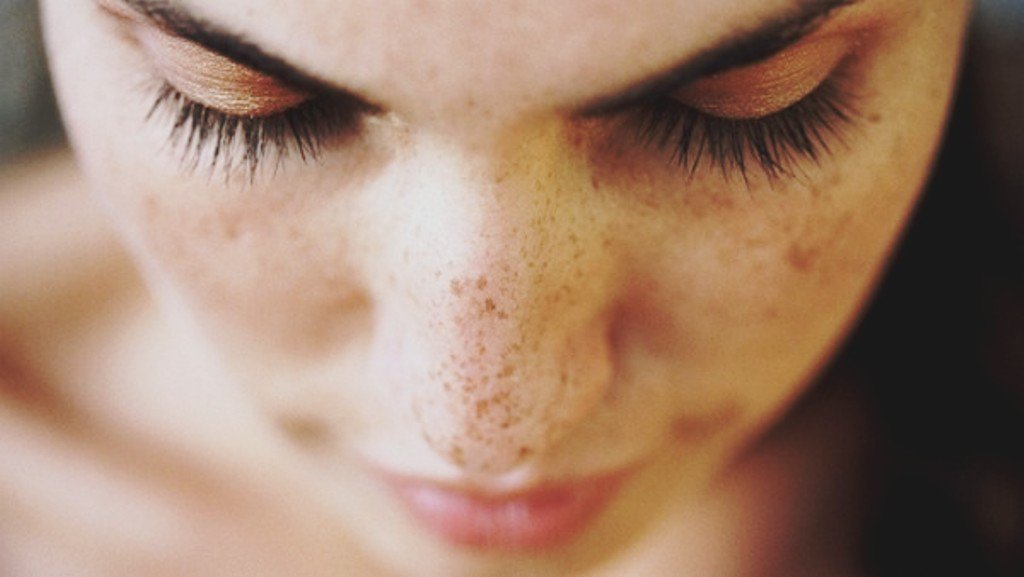How To Get Rid Of Dark Spots On Your Face

Dark spots on the face, also known as hyperpigmentation, can be a source of concern for many individuals. These spots can occur for various reasons, including sun exposure, hormonal changes, acne, and aging. While they are generally harmless, they can affect one’s self-confidence and desire for clear and radiant skin. This article will delve into the causes, treatment options, and preventive measures for dark spots on the face….CONTINUE READING
What is Dark Spots on Face?
Dark spots on the face refer to areas of increased pigmentation that appear darker than the surrounding skin. They can vary in size, shape, and color intensity.
Common types of dark spots include age spots, melasma, and post-inflammatory hyperpigmentation. These spots are typically harmless, but it’s important to determine the underlying cause and take appropriate measures to prevent further darkening or the appearance of new spots.
Common Causes of Black Spots on Face
Black spots on the face can be caused by a variety of factors, including
What Causes Dark Spots on the Face?
Understanding these causes can help you identify the triggers and take necessary precautions. Here are some common causes of dark spots on the face:
1. Sun Exposure
Prolonged exposure to the sun’s harmful ultraviolet (UV) rays can trigger the production of melanin, the pigment responsible for skin color. This excess melanin can accumulate in certain areas, resulting in dark spots on the face.
2. Hormonal Changes
Hormonal changes, particularly during pregnancy or while taking hormonal medications, can lead to the development of dark spots on the face. This condition, known as melasma or “pregnancy mask,” is characterized by symmetrical, blotchy patches on the cheeks, forehead, and upper lip.
3. Acne
Acne breakouts can sometimes leave behind dark spots, known as post-inflammatory hyperpigmentation. When acne lesions heal, they can trigger an overproduction of melanin, causing the surrounding skin to darken.
4. Aging
Our skin undergoes various changes as we age, including increased melanin production in certain areas. This can result in the formation of age spots or liver spots on the face, hands, and other sun-exposed areas.
5. Skin Injuries
Skin injuries, such as cuts, burns, or abrasions, can lead to dark spots during healing. These spots are typically temporary and fade over time as the skin regenerates.
14 Home Remedies to Get Rid of Dark Spots on Your Face
Here are some home remedies that you can use to reduce the appearance of dark spots and other blemishes!
1. Lemon Juice
A trendy remedy for dark spots on the face is lemon juice. It contains vitamin C, which can help reduce inflammation and lighten dark spots on the skin. The acidity of the lemon juice can help bleach those dark spots on the skin.
- Cut a fresh lemon and squeeze the juice into a clean bowl.
- Dilute the fresh lemon juice with equal parts of clean water.
- Soak a clean cotton ball in the juice and apply it to the affected area. This may lead to some stinging or itching, but it is normal.
- Leave it on for 20-30 minutes and rinse with water. Make sure to avoid soap.
- Apply this home remedy for 2-3 weeks until your dark spots disappear.
Note: If you have sensitive skin, dilute the lemon juice with water or honey before applying it. Don’t use lemon juice if you have open sores on your skin. Do not go under the sun after applying lemon juice.
2. Aloe Vera
Aloe vera is a popular hair treatment. Aside from that, it has many healing properties, which can also aid in treating dark spots! Aloe vera contains polysaccharides that can promote the growth of new skin cells.
A 2014 study published in the Journal of Chemical and Pharmaceutical Research shows that the aloe vera gel is a natural dark spot corrector. It can help remove skin blemishes and clear dark spots on the face.
Aside from removing dark spots and blemishes, aloe vera gel can also help make the skin younger and more straightforward! This is why aloe vera is another ingredient in skin care products like soaps and lotion.
- Cut an aloe vera leaf from a plant and clean it with water.
- Cut the Aloe Vera leaf in half and extract fresh aloe vera gel with a spoon.
- Apply a thin layer of aloe vera gel on the dark patches and black spots.
- Massage the area gently with your fingertips for 5-10 minutes and allow it to dry for at least 30 minutes.
- Rinse your face with warm water.
- Use this simple remedy 1-2 times daily until you no longer have dark spots on your face.
3. Castor Oil
Castor oil is excellent for treating dark spots on the face. It is rich in omega-3 fatty acids that help clean the bacteria, oil, and dead skin cells that cause these skin problems.
In addition, it contains vitamin E, which can improve blood circulation and stimulate the growth of new skin cells.
- Clean your face thoroughly with mild soap.
- Pour 4-5 drops of castor oil into a bowl and dip a clean cotton ball in the oil.
- Apply it directly to the dark spots, avoiding eye areas.
- Leave it on for 40 – 50 minutes and then massage gently for some minutes; this can help the oil penetrate the skin.
- You can also leave it overnight and rinse it the following day.
- Repeat this process regularly.
Note: Avoid this remedy if you have open wounds on your skin. It is recommended to apply the oil before your daily moisturizing routine.
4. Apple Cider Vinegar
Apple cider vinegar is another good remedy for dark or brown spots on the face.
The Journal of Dermatology shows that apple cider vinegar contains alpha-hydroxy acids that can help remove dead skin cells and accelerate new skin cells’ re-growth. It can also act as an antioxidant that can help remove dirt and toxins and lighten the skin’s tone.
Apple cider vinegar contains many acids, mineral salts, and vitamins such as A, B, C, and E. These ingredients can help fade away dark spots and reduce other hyperpigmentation problems.
Method 1
- Dilute one teaspoon of raw apple cider vinegar with one teaspoon of water.
- Add a cotton ball to the solution to the affected skin.
- Leave it on for 10-15 minutes.
- Then wash off with lukewarm water. Repeat this process once daily.
Method 2
- Also, you can mix one teaspoon of raw honey and two teaspoons of raw apple cider vinegar in a clean bowl.
- Dip a cotton ball and apply the mixture to your dark spot areas.
- Leave it on for 10-15 minutes. Do this once daily.
- Honey has relaxing and soothing properties that can strengthen the effect.
5. Sandalwood
Sandalwood is a well-known treatment for dark spots from ancient. The natural oils in it can help moisturize skin and balance pigmentation. It has anti-aging, anti-microbial, and skin-softening properties.
Sandalwood can also prevent germs and toxins and eliminate pimples, blackheads, whiteheads, and acne scars.
Method 1
- Mix 2 tablespoons of sandalwood powder, three tablespoons of Vitamin E Oil, and three tablespoons of orange juice In a clean bowl.
- Mix well until you get a thick paste, and apply the paste over your face.
- Leave it on for 30-50 minutes and wash it off with lukewarm water.
- Repeat this process once daily until your black spots go away completely.
Method 2
- Mix ½ tablespoon of sandalwood powder, two tablespoons of milk, and one teaspoon of glycerin to make a paste.
- Apply the thick paste to your face and leave it on for 20-30 minutes.
- You can do this 3-4 times a week until the dark spots disappear entirely.
6. Potatoes
Due to their powerful natural bleaching properties, potatoes are another excellent remedy for black spots or dark patches. It contains potassium, zinc, and vitamins such as B6 and C. These ingredients can help remove dead skin cells and reduce pigmentation.
In addition, the starch in potatoes can help fade blemishes and acne scars. The enzymes in potatoes are great for maintaining healthier skin!
Method 1
- This is the easiest method. You need a potato and a knife.
- Slice up a potato into thin slices.
- Place them directly on the areas with dark spots.
- Leave for 5-10 minutes, and then wash off with lukewarm water.
Method 2
- Peel and grate the potato to a fine texture.
- Mix a teaspoon of honey with the grated potato and apply the mixture to your face.
- Rinse it off with lukewarm water.
- You can do this 2-3 times every week.
Method 3
- Extract the juice of a potato
- Add a pinch of turmeric powder or lemon juice to the potato juice.
- Apply it to your face and let it dry.
- Let it dry before rinsing your face with warm water.
- The lemon juice is rich in vitamin C and can help eliminate dark black spots within a few weeks.
Aside from potatoes, you can also use tomatoes on your dark spots! Tomatoes also have unique properties that promote younger and glowing skin while removing impurities!
7. Buttermilk
Buttermilk is also effective in removing dark spots on the face. Like lemons, it can also eliminate dark spots, scars, and skin blemishes without any burning sensation! The lactic acid in buttermilk can also decrease skin pigmentation, making your skin brighter and younger-looking!
Method 1
- This is the easiest way to use buttermilk.
- You can apply the buttermilk directly on your affected skin with a cotton ball.
- Leave it on for 10- 20 minutes and rinse with clean water.
- Repeat this process once a day.
Method 2
- Mix 2 teaspoons of fresh tomato juice and four buttermilk in a small bowl.
- Mix well and apply the mixture to the dark spots with a cotton ball.
- Leave it on for 20-30 minutes and wash it off with clean water.
- Tomato juice and buttermilk have excellent bleaching properties that can give quicker results.
You can use milk as an alternative to buttermilk. Soak a cotton ball and apply it directly to the skin. Leave it for at least ten minutes before rinsing it with warm water. Repeat this treatment two times a day for a month!
Note: Avoid applying the buttermilk around your eyes, as the lactic acid in the buttermilk may irritate the sensitive skin under the eyes.
8. Oatmeal
Oatmeal is not only great for breakfast but is also considered effective for skin exfoliation. It contains saponins that can help exfoliate and remove dead skin cells effectively.
The anti-inflammatory and soothing properties of oatmeal also help reduce itchiness. In addition, it can be used to get rid of pimples and acne scars. If your skin is oily, oatmeal is more suitable because it can balance the oil content and help the skin become smoother.
- Add a tablespoon of milk, one tablespoon of honey, and three tablespoons of oatmeal into a bowl.
- Mix well until the mixture becomes a paste.
- Apply the paste as a face mask over your face.
- Leave it on for 30-50 minutes until it dries.
- Rinse with clean water and apply a moisturizing cream.
- Repeat this process twice a week.
The moisturization of honey and the bleaching of milk can increase the effect effectively.
9. Turmeric
Curcumin in turmeric is a powerful antioxidant that can help reduce black spots and brighten your skin. It can also reduce skin discoloration and pigmentation.
In addition, turmeric can help fight free radicals and eliminate other skin problems, such as sunspots.
- Add one teaspoon of turmeric, lemon juice, and two tablespoons of milk into a small bowl.
- Mix well to get a paste and apply it over your face.
- Gently massage the dark areas in circular motions for 5-10 minutes.
- Please do not leave it on for over 20 minutes; otherwise, turmeric will make your skin yellow.
- Wash off with clean water and apply lotion.
- You can do this 2-3 times a week.
Note: After using this remedy, your skin will have a slight yellow color within a few days, which is normal.
10. Papaya
Papayas can act as an antidote for dark spots. It contains the papain enzyme, which can help exfoliate the skin and remove dead skin cells. It can also clear the dirt and excess oil on your skin.
In addition, papayas can protect the skin from the sun’s harmful ultraviolet rays. This will inhibit the production of tyrosinase, which is the leading cause of the overproduction of melanin.
- Put chopped half-ripe Papaya in a bowl.
- Mash up the Papaya until it becomes a thick paste.
- Apply the paste over your face and leave it on for 20-30 minutes.
- Wash off with clean water.
- Repeat the treatment at least three times a week for a better result!
Note: Try to use ripe Papaya because it is gentler, especially if your skin is dry or sensitive.
11. Olive Oil
Olive oil offers many benefits, including healthier skin while eliminating dark spots and pimple scars!
- Take some olive oil on your palm.
- Massage it gently on your face while focusing more on dark spots and scars. Massage for a few minutes until your skin absorbs the oil.
- Take a clean cloth and dip it into warm water. Put the wet cloth on the face to absorb the steam.
- Wipe the excess oil using the oil but do not rub! After two minutes, wash your face with water.
12. Onion Juice
Do you know that onion juice also clears dark spots on the face? You can apply it in two ways:
- In 1 tablespoon of onion juice, add two tablespoons of honey. Mix it well and apply the mixture to your skin. Leave it for at least 20 minutes before rinsing it with warm water. You can add vinegar if your skin is oily.
- Another way is to keep a cotton ball in the onion juice. Apply it directly to the skin. Air-dry it before rinsing it off.
13. Almonds
Almonds are not only great for chocolates, but they are also effective in lightening the skin while reducing dark spots and blemishes! They are rich in healthy fats, antioxidants, and vitamin E, which can help the skin keep it clear and flawless!
- Get eight to ten pieces of almonds and soak them in milk overnight.
- In the morning, remove the skin and grind the almonds.
- Add a teaspoon of sandalwood powder and ½ teaspoon of honey. Mix well to make a paste.
- Apply the mixture to your skin and leave it on for at least thirty minutes before rinsing it with warm water.
You can repeat this treatment at least once a week! You can also massage your skin with almond oil at night to improve the complexion and decrease free radicals from the sun. Almond oil is also effective for lightening dark spots and removing scars.
14. Vitamins
Your skin needs the right balance of nutrients to keep your skin looking and working. The Vitamins can feed the skin well from the inside.
Vitamin A: Vitamin A is an antioxidant that can help prevent sun damage. It can also help wounds heal and oil glands around your hair follicles work. Vitamin A deficiency can make your skin dry, itchy, or bumpy.
Vitamin E: Vitamin E is an antioxidant that can help absorb the energy from UV light and even the skin tone. This will help prevent wrinkles, sagging, and skin cancer. Vitamin E can be used with vitamin C to strengthen cell walls. You can open a vitamin E capsule and apply the contents directly to dark spots before bed.
Vitamin C is a powerful antioxidant that can help protect your skin cells from free radicals. Vitamin C deficiency can cause bleeding gums and easy bruising. It can also help reduce the melanin your skin produces and lower your chance of skin cancer. You can often eat oranges, strawberries, and other fruits that contain a lot of vitamin C.
Medical Treatments for Dark Spots on the Face
1. Topical Medications
Topical medications, such as hydroquinone, retinoids, and corticosteroids, are often prescribed to lighten dark spots and skin tone.
These medications work by inhibiting melanin production or promoting skin cell turnover. It’s crucial to use these medications as directed and follow the advice of your dermatologist to achieve optimal results.
2. Chemical Peels
Chemical peels involve the application of a chemical solution to the skin, which exfoliates the outer layer, revealing a fresher and lighter skin underneath.
This treatment can help reduce the appearance of dark spots and improve overall skin texture. Chemical peels are available in different strengths, and your dermatologist will determine the appropriate type.
3. Laser Therapy
Laser therapy utilizes focused beams of light to target and break down the excess melanin responsible for dark spots.
This treatment option can be effective for various types of hyperpigmentation, and multiple sessions may be required to achieve the desired results. Laser therapy should only be performed by a qualified dermatologist or healthcare professional.





